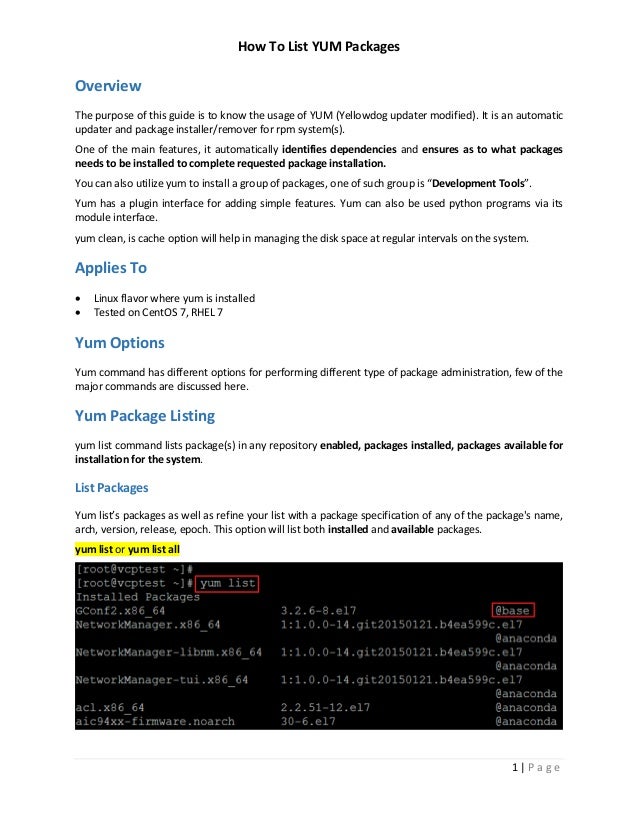


If you show again the list of transactions, it will look something like this yum history 3.- Yum history command To demonstrate this, I will first install two packages like nano and vim. Likewise, you can specify a package to know the information about the transaction where it has been involved. There you will have information about the packages that have been affected. Using the transaction ID and the ìnfo command, we can display information about the transaction performed.įor example, yum history info 7 2.- Show info of one transaction ID | Command line | Date and time | Action(s) | Alteredħ | update | 20:43 | Upgrade | 23 E Show information about a transaction For example: yum history list vim-minimal You can also use list to query the transaction history of a specific package. The fields on the output screen show the ID, the command itself the date and time it was performed the action that was executed and finally a number indicating affected packages along with a legend. You will get an output screen showing you all the transactions that have been performed. In this post, I will execute the commands as root user to avoid problems. With these operations, it is enough to use it. It is possible that several may be done to achieve the objective. rollback: In this case, it reverses the configuration of the RPM packages to the previous state of the transaction.undo: Reverses to the previous state of the transaction performed.redo: which repeats the tasks performed in the transaction.list: that allows us to list the transactions made.info: Shows the information about the transactions.It is a marvel that we are going to explain.Īlthough the options of yum history are several, the most important ones are In addition to this, we can rollback to a previous state or check the history that has been made. Each of them is identified with an ID for better management. These transactions can be a joint package update, uninstallation, or an installation. The main reason to use yum and the history sub command is to verify the transactions that the command has performed over time. In addition to this, yum history is used to verify transactions that have been made with this program. So, we will use yum history to find out package information about installed or uninstalled packages on the system. Yum is one of the most important package managers out there because of things like Yum history.


 0 kommentar(er)
0 kommentar(er)
